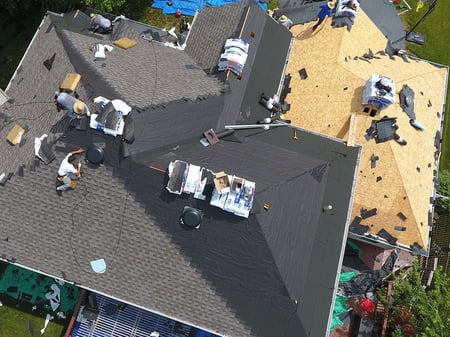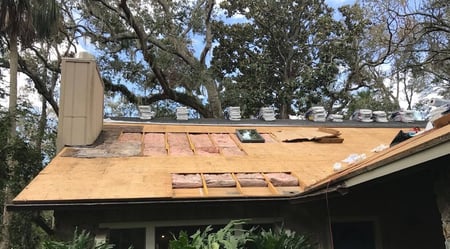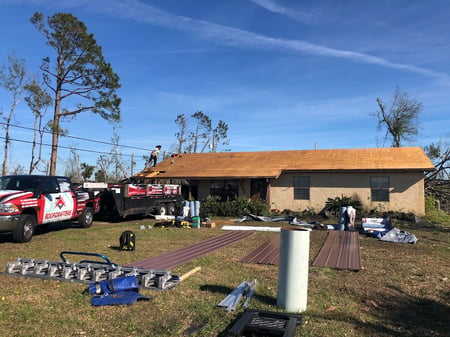
Roof replacement projects are a significant undertaking for homeowners, involving careful planning, budgeting, and coordination with roofing contractors. However, despite meticulous preparation, it's not uncommon for unexpected surprises or evolving preferences to arise along the way. This is where the concept of 'change orders' steps into the spotlight, gently reminding you to not put your piggy bank back on the shelf just yet.
RoofCrafters has been replacing roofs for over 30 years, and we can tell you that change orders during a roof replacement represent a flexible and essential component of the construction process, allowing homeowners and contractors to adapt to unforeseen challenges, incorporate design modifications, and ensure compliance with updated standards. However, we also understand that a curveball thrown at you mid-replacement isn’t quite what you had in mind. At the end of the day folks, even the top-rated, most reliable roofing contractors have to issue change orders from time to time.
No, not because it brings roofing contractors joy to bring our clients discomfort (which, we hate to do), but because sometimes, the exterior of a roof doesn’t always tell the same story as the interior, or your aesthetic preferences have shifted. With that being said, we want you to be knowledgeable about all things change orders in case you’re ever in a position where you must deal with that situation. So, in just a few short moments, you’ll learn what a change order is, some common reasons change orders may occur, and the positives and negatives of change orders. Let’s get started!
What is a Change Order?

A change order during a roof replacement is a document or formal request that outlines modifications, alterations, or additions to the original scope of work agreed upon in the initial contract or agreement between a homeowner or property owner and a roofing contractor. Change orders are typically used when there is a need to make changes to the roofing project that was not initially anticipated or specified in the original contract.
Why Do Change Orders Occur During a Roof Replacement?
A change order may occur during a roof replacement due to:
1. Unforeseen Damage: If the roofing contractor discovers unexpected damage to the roof's structure or underlying materials that was not apparent during the initial inspection, a change order may be necessary to address the additional repairs or replacements needed.
2. Material or Design Changes: If the homeowner decides to change the roofing materials, color, style, or other design elements after the initial contract has been signed, a change order is used to document and approve these changes. This often involves adjusting the cost and timeline accordingly.
3. Additional Work: Sometimes, the homeowner may request additional work or upgrades beyond the scope of the original agreement, such as adding skylights, ventilation systems, or gutter replacements. A change order outlines these changes and their associated costs.
4. Code Compliance: Changes in local building codes or regulations may require adjustments to the roofing project. If the contractor needs to make modifications to ensure compliance, a change order is issued.
5. Unforeseen Delays: Weather-related delays, material shortages, or other unforeseen circumstances may require changes to the project timeline. A change order can be used to update the schedule and address any associated costs.

It's essential for both the homeowner and the roofing contractor to communicate openly and agree upon any changes in the project scope. Change orders help ensure transparency, prevent disputes, and provide a formal record of any modifications to the original contract. Before approving a change order, it's advisable for the homeowner to review the proposed changes, associated costs, and their impact on the overall project budget and timeline. Additionally, both parties should sign the change order to formalize the agreement.
Are Change Orders a Bad Thing?
Change orders are not inherently bad, but they can have both positive and negative aspects depending on how they are managed and the reasons for their issuance. Here are some considerations regarding change orders:
Positive Aspects of Change Orders
Flexibility: Change orders allow for flexibility during a roofing project. They enable adjustments to the original plan, accommodating unforeseen circumstances or the homeowner's evolving preferences.
Improved Outcomes: Sometimes, change orders can lead to better results. They may allow for the incorporation of upgraded materials, design changes, or necessary fixes that enhance the final product.

Compliance and Safety: Change orders may be necessary to ensure that the project complies with updated building codes, safety regulations, or unforeseen structural issues, which can be crucial for the long-term integrity of the construction.
Client Satisfaction: Addressing a homeowner's changing needs or preferences through change orders can improve client satisfaction and lead to a more successful project outcome.
Negative Aspects of Change Orders
Cost Overruns: One of the primary concerns with change orders is that they can lead to increased project costs. Frequent or substantial changes can strain the budget, potentially leading to financial stress for both the homeowner and the contractor.
Delays: Change orders often require additional time for planning, approval, and implementation. They can result in project delays, which may not be ideal if the homeowner has strict deadlines.

Communication Challenges: Poor communication or disagreements regarding the necessity and cost of change orders can lead to disputes between the homeowner and the contractor.
Complexity: Managing multiple change orders can make a project more complex, potentially increasing the risk of errors or misunderstandings.
To make change orders work more positively, it's essential for both parties, the homeowner and the contractor, to communicate effectively, maintain transparency, and follow a structured process for documenting and approving changes. Here are some best practices:
- Clear Documentation: All changes should be documented in writing, detailing the scope, cost, and timeline adjustments. Both parties should sign and agree to the change order.
- Regular Communication: Maintain open and ongoing communication throughout the project to minimize surprises and facilitate smooth decision-making.
- Budget Considerations: Keep a close eye on the impact of change orders on the project budget and discuss how any increases will be managed.
- Realistic Timelines: When considering change orders, be realistic about the impact on the project timeline and adjust expectations accordingly.
Remember, change orders can be a necessary part of construction and renovation projects, but they should be managed carefully to ensure they have a positive impact on the project's overall success. Clear communication and documentation are key to managing change orders effectively.
Navigating the Construction Curveball
As you now know, change orders occur during roof replacement projects for various reasons, and their occurrence is not inherently good or bad. These modifications to the original project scope are a natural response to the dynamic nature of construction work and the evolving needs and preferences of homeowners. Change orders can serve both positive and negative purposes, depending on how they are managed.
Positive aspects of change orders include flexibility, improved project outcomes, compliance with regulations, and enhanced client satisfaction. They allow for adjustments that can lead to a better final result and ensure that the project aligns with safety and code requirements. However, negative aspects of change orders involve concerns such as cost overruns, project delays, communication challenges, and increased complexity. Managing change orders effectively requires clear documentation, regular communication, budget considerations, and realistic timelines.
When approached with transparency, communication, and careful consideration of their impact, change orders can contribute to a more satisfactory and adaptable construction process. If you’re interested in learning more about change orders and would like to speak with a trusted contractor prior to your project planning, be sure to hit the “Schedule an Inspection” button down below, and one of our experts will provide you with a detailed estimate + scope of work, and ease your mind if a change order may happen to occur during your replacement.
My name is David Toth and I am the lead estimator in North Florida with RoofCrafters Roofing. Originally from New Brunswick, I have called Florida home for the past 47 years. I enjoy cooking along with traveling to different historical areas in Florida when I have free time.



